Typeform: Formulieren omzetten in menselijke conversaties
Iconische producten Aflevering 009
Voordat we beginnen, een disclaimer: ik gebruik Typeform en ik ben er dol op. 😍

We gebruiken Typeform nu al een tijdje bij Salesflare en ik zou geen andere enquêtesoftware willen gebruiken bij onze klanten.
Ik vind het geweldig dat de ervaring zoveel beter is dan met welke concurrerende app dan ook. Het gebruik van Typeform maakt de interactie met Salesflare een beetje menselijker, en dat is iets waar we veel waarde aan hechten. ❤️
Typeform maakt onze klantrelaties menselijker.
Desondanks heb ik nooit concreet kunnen vaststellen hoe ze het doen. Waarom geen enkele andere app daarmee te vergelijken lijkt. En hoe Typeform deze voorsprong al die jaren weet te behouden. Waarom is niemand hen voor?
Dus begon ik aan onze negende zoektocht naar iconische producten, waarbij ik onderzocht wat Typeform nu precies zo iconisch maakt.
Laten we gaan 👇
Dingen een beetje menselijker maken
De vonk voor Typeform ontstond toen de oprichters een leadformulier aan het bouwen waren dat gebruikt zou worden in een expositieruimte. Je weet wel, die dingen die je gegevens in beslag nemen.
Ze wilden het beter maken dan wat ze ooit eerder hadden gezien. In plaats van gewoon een standaardformulier te bouwen, wilden ze iets maken dat er echt uit zou springen en mensen zou aanspreken.
Ze ontdekten een gebrek aan empathie in de manier waarop de meeste bedrijven om gegevens vroegen. De overgang van persoonlijke gesprekken naar online formulieren leek een erg grote stap. Mensen schreven nog steeds in hokjes en klikten op kleine knoppen, wat niet echt als een menselijke ervaring aanvoelde. 🙄
Geïnspireerd door de film "War Games", waarin de hoofdpersoon een getypt gesprek voert met een mainframecomputer, bedachten ze dat ze een formulier konden maken dat meer aanvoelt als een gesprek.
 De inspiratie voor Typeform: War Games. Zie je het, of niet? 😏
De inspiratie voor Typeform: War Games. Zie je het, of niet? 😏Ze wilden iets creëren dat leuker was dan wat vakjes invullen. Ze wilden de barrière tussen mensen en computers opheffen.
Jaren later vatten ze dit samen in de visieverklaring van Typeform:
Maak de dingen wat menselijker.✨
Typeform gelooft dat formulieren niet alleen gaan over het verzamelen van de gegevens die u nodig hebt, maar ook over het controleren van de indruk die u achterlaat. Of zoals ze plegen te zeggen: "Hoe je het vraagt is alles". 🤯
Typeform stelt menselijke ervaring boven gegevens
Het DNA van een bedrijf begint meestal bij de oprichters.
In het geval van Typeform is ontwerpen de favoriete bezigheid van de medeoprichters. Dan gaat hun energie pas echt stromen. 🤩
Zijn grootste concurrent en marktleider, SurveyMonkey, is door DNA een data-analysebedrijf. Typeform is anders. Het is een gebruikersinterfacebedrijf.
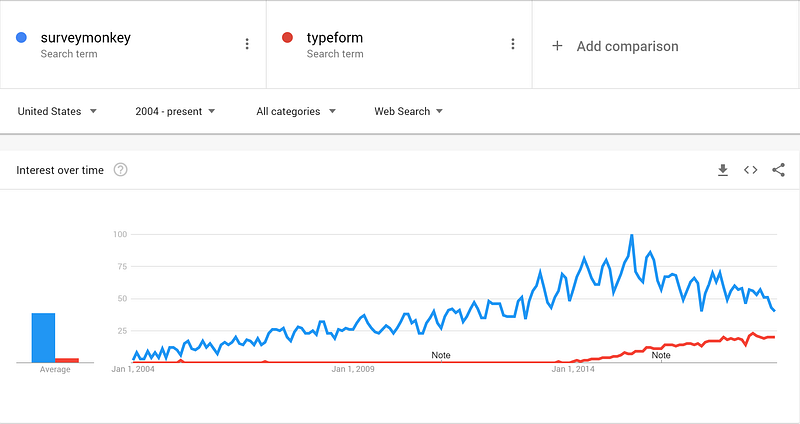
Natuurlijk geeft het team om gegevens. Anders zouden ze geen software maken die gegevens verzamelt. Maar ze hebben een "mensen eerst, gegevens daarna" mentaliteit.
Ze geloven in "data-informed, in plaats van data-driven". Dit betekent dat ze de kracht van data erkennen, maar ook nooit hun buikgevoel helemaal los zullen laten.
Het is een kwestie van het mengen van klantperceptie met conversiepercentages. Een evenwicht vinden tussen gevoelens en feiten. Onderbuikgevoel en statistieken.
Typeform stelt empathisch ontwerp boven gegevensgestuurd ontwerp.
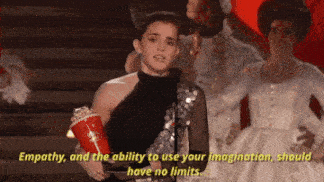
Het Typeform-team zegt soms dat ze werken aan HX, niet aan UX. Menselijke ervaring, niet gebruikerservaring.
UX gaat over iemand succesvol van A naar B brengen. HX gaat verder dan dat. Het stelt de vraag: hebben ze punt B bereikt met een emotionele connectie?
Het Typeform team denkt aan mensen. Echte mensen. Wat zijn hun behoeften? Hun emoties?
Het vereist nadenken over wie de gebruiker echt is. Dicht bij ze komen. Hen begrijpen. 🤗
Hiervoor doet Typeform veel klantonderzoek. En niet alleen het productteam test voortdurend nieuwe ideeën op klanten. Ook het go-to-market-team probeert dichter bij de klanten te komen, om te begrijpen waar de waarde voor Typeform echt ligt, wat ze echt willen.
Uiteindelijk is het de emotionele connectie die ervoor zorgt dat mensen verliefd worden op een product. ❤️
Het ontwerp van Typeform is het resultaat van een niet aflatende focus
Klinkt alsof deze Typeform-jongens behoorlijk geniaal zijn, toch?
Hoewel een deel van het succes van de software kan worden toegeschreven aan intelligentie en slimme keuzes, is het waarschijnlijk meer het resultaat van extreme focus. Het is de niet aflatende investering van tijd en middelen in een duidelijk doel.
Wat je vandaag ziet wanneer je een Typeform invult, is het resultaat van een lange periode van obsessief werken aan honderden kleine details. Het team heeft onvermoeibaar doorgewerkt aan vele iteraties, waarbij de kleinste stukjes formulierinteractie één voor één werden aangepakt.

Door voortdurend te focussen op gebruiksvriendelijkheid, menselijk contact en een mooi ontwerp, vond Typeform iets opnieuw uit dat al tientallen jaren bestond. En ze bleven het voortdurend perfectioneren en uitbreiden om het unieke karakter ervan te behouden.
En dat is Typeform goed van pas gekomen. In een verzadigde markt zoals die van formulierensoftware, zou concurreren door te kopiëren wat al bestaat vruchteloos zijn geweest. In plaats daarvan produceerde Typeform iets wat mensen wilden en nog niet kregen: een prachtige manier om aantrekkelijke formulieren te bouwen.
Ze geven ons formulieren die niet aanvoelen als formulieren
Steek je hand in de lucht als je graag formulieren invult...
Ja, dat dacht ik al. 😏
We moeten allemaal communiceren over gegevens, maar we houden niet van formulieren. We willen formulieren die niet aanvoelen als formulieren.
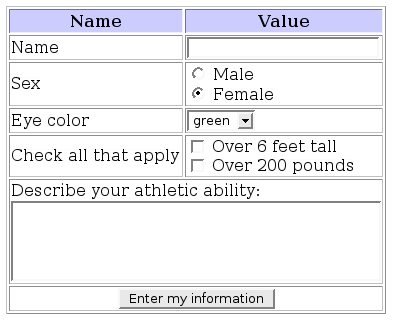
Zo maak je formulieren menselijker.
Eén voor één
Typeform splitst de interface van het formulier op in kleinere onderdelen. Je ziet geen grote lijst met vragen, maar slechts één tegelijk en er komt een natuurlijke stroom van dingen op gang.

Dit maakt het hanteerbaarder, motiveert meer en houdt mensen meer betrokken.
Grotere lettertypen voor menselijkere gesprekken
Eén vraag per keer betekent dat er meer schermruimte is die kan worden gebruikt.
En door lettertypes te gebruiken die veel groter zijn dan die van het gemiddelde formulier, worden formuliermakers ook aangemoedigd om vragen te bedenken die eenvoudiger en menselijker zijn. En de invullers geven menselijkere antwoorden.
Geen dozen, minder knoppen
In hokjes schrijven en op knopjes klikken voelt niet erg menselijk. Daarom werkt Typeform met één regel tekst en een cursor. Een vraag en een mogelijkheid om te antwoorden. Dat is het.

Hou je echt van knopen? Ze zullen het laten zien. Maar als je je muis niet wilt aanraken en gewoon je toetsenbord wilt gebruiken, dan kan dat ook. Druk gewoon op "enter" of een van de sneltoetsen naast het antwoord.
Voorbij de tekst
Een gebruikelijke vorm is een groot tekstblad, waarin om meer tekst wordt gevraagd.
Met Typeform kun je eenvoudig formulieren bouwen met pictogrammen, afbeeldingen, gifs en video's. Het maakt dingen visueler. Het maakt dingen visueler. En weer menselijker.

Typeform groeit door viraliteit en integraties
Zoals alle producten die met de snelheid van het licht groeien, zijn de groeimechanismen speciaal en inherent aan het kerngebruik van het product.
1. Virale groei: elk verzonden formulier is een advertentie voor Typeform
Mensen sturen mensen formulieren. Deze formulieren zijn mooi. En ze bevatten een subtiele 'Powered by Typeform'-vermelding.
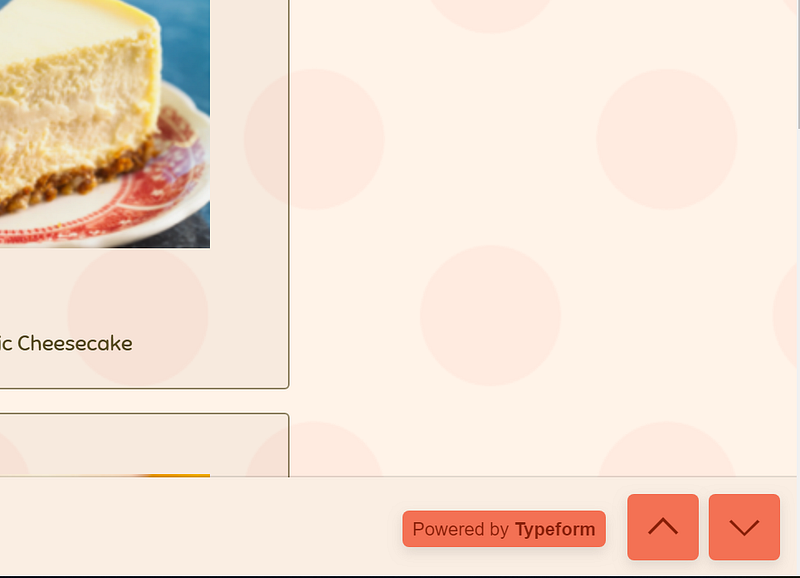
Zo simpel, maar deze knop staat voor 50% van de aanmeldingen van Typeform. 🚀
2. Integraties: mensen blijven als Typeform deel uitmaakt van een workflow
Integraties zijn geweldig voor de retentie van Typeform. Als je maar één keer een enquête verstuurt, heb je Typeform daarna misschien niet meer nodig. En misschien stop je wel met je abonnement. 🛑
Zodra je formulieren in een workflow opneemt, verandert dat allemaal. Je kunt niet zomaar stoppen met het gebruik van Typeform. Dan moet je het formulier vervangen of zelfs de hele flow stoppen.
Dat is de reden waarom Typeform veel tijd heeft besteed aan het uitbouwen van zijn integraties met MailChimp, Google Sheets, Zapier, ... en waarom je formulieren in elke website kunt integreren.

3. Branding: mensen kiezen alleen voor Typeform als ze het gevoel hebben dat het anders is
Het Typeform-team heeft enorm veel tijd en middelen besteed aan het begrijpen en herdefiniëren van hun branding. En vervolgens alle ontwerpen opnieuw gedaan.

Ze willen ervoor zorgen dat mensen de menselijke kant van het bedrijf begrijpen en hoe ze formulieren menselijker maken. Op die manier willen ze verder groeien dan alleen een softwarebedrijf. 🦄
En ze willen ook duidelijk gaan communiceren over dat andere waar Typeform overheen wil groeien: alleen over formulieren gaan.
Typeform wil verder groeien dan formulieren
Vanaf het allereerste begin hadden de oprichters van Typeform een visie over het menselijker maken van communicatie.
Ze begonnen met formulieren en noemden zichzelf Typeform. Nu willen ze verder groeien dan dat.
Ze proberen niet langer gezien te worden als een formulierenhulpmiddel of een enquêtebouwer, maar als een communicatiehulpmiddel. In de richting van menselijke communicatie in het algemeen.
Op dit moment kun je Typeform gebruiken voor het organiseren van enquêtes, feedbackformulieren, quizzen, interactieve verhalen, ... maar ze mikken veel groter. 🔭
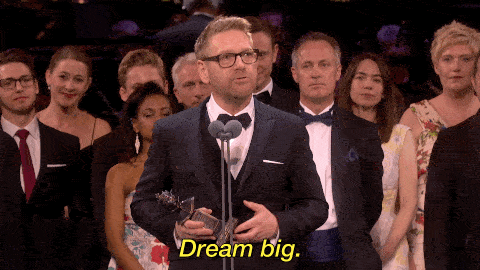
Met Typeform kun je een gesprek voeren via een interface. Je kunt gegevens geven en gegevens verbinden met Typeform. Je kunt workflows maken.
Mensen zullen altijd informatie van andere mensen moeten verzamelen. De vraag is hoe ze dat zullen doen. Het zal niet altijd via een browser of een formulier gebeuren. Het team kijkt onder andere al naar het gebruik van AI, VR en spraaktechnologie. Het automatisch organiseren en transcriberen van gesprekken.
Typeform draait volledig om het creëren van conversatie-interfaces en het uitzoeken hoe deze de traditionele point-and-click interfaces gaan vervangen.
En ze zullen niet stoppen voordat ze hun volledige potentieel hebben bereikt. 🙌
Bonus: Typeform... wat zit er in de naam?
Ooit afgevraagd wat de naam Typeform betekent? 😏

Volgens de medeoprichter, David Okuniev, verwijst het naar:
- De mogelijkheid om het formulier in te typen zonder de muis aan te raken
- Het feit dat het een ander soort vorm is
- Het belang van typografie in hun product
Wil je meer Iconic-producten bekijken? Lees de hele serie hier! 📲
We hopen dat je deze post leuk vond. Als je het leuk vond, vertel het dan verder!
Voor meer nieuws over startups, groeimarketing en verkoop:
Laatst bijgewerkt:
- 7 Beste CRM's voor Mac in 2025 - 19 september 2025
- 7 Beste HubSpot CRM Alternatieven in 2025 - 17 september 2025
- 7 Beste alternatieven voor Pipedrive in 2025 - 16 september 2025